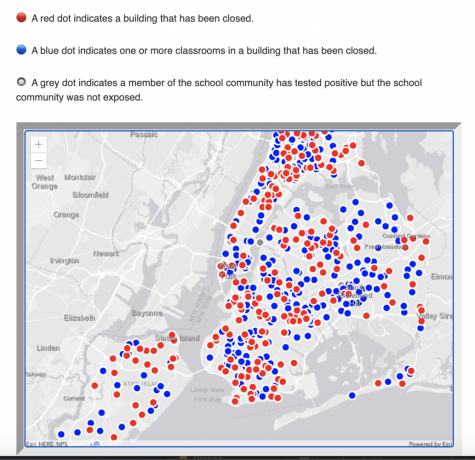Parents, students and teachers rallied at the Department of Education headquarters on March 13. They demanded that schools be reopened after over a year of virtual learning due to the COVID-19 pandemic. Protestors stressed that online classes are no replacement for in-person education, and the prolonged school closure has caused immeasurable learning loss. Maud Maron, a City Council candidate, said that in-person learning is now safe since teachers have been vaccinated.
While the need for in-person education for all students is undeniable, not all students can adjust to changes in their learning environment overnight. For individuals with special education plans, the pandemic and consequent switch to online learning hindered their ability to meet their educational goals. These students receive an Individualized Education Plan, and accommodations can include physical therapy, occupational therapy and speech therapy. All of these services also translated to a remote format with varying degrees of success.
New York City is home to roughly 200,000 public school students with suspected disabilities. Despite this, the city’s plan for precautionary measures during the reopening of schools outlined on the Department of Education’s website fails to even mention or meet the needs of this extremely vulnerable population. Considering the challenges these students face, the city must prioritize these students when transitioning back to in-person learning.
According to the precautionary measures set by the Department of Education, if there are one to two confirmed cases of COVID-19 in a classroom, the room must be closed for 10 days. If there are two unrelated cases, then there should be a 10-day school closure for all students and staff. On days when a student’s classroom or school is closed, online learning continues.
At the time of publication, 792 classrooms are closed, 28 schools are under 24-hour building closures, and 216 schools are under extended building closures. It’s not hard to believe, then, when one parent at the protest told the crowd that her child had only 29 days of in-person instruction since September.
When students returned to class after winter break, 722 schools had to close down due to positive coronavirus cases. Since spring break has started, more classrooms and schools will close once students are tested upon returning from break. Considering that in-person education is sporadic, the Department of Education must be conscientious about deciding which students use the finite resource that is in-person education.

This map shows all known cases of COVID-19 in public schools (Graphic from the NYC Department of Education website).
Mary Girimonte, an educator who teaches students on the autism spectrum, said her biggest struggle during the normal school year was working with her students to maintain eye contact. During in-person learning, she often used a rock wall or a balance beam to help her students. After switching to remote learning, she is “now stuck trying to soothe them through video chats.” While it is too early to have conclusive research on the academic regression of students with special needs, their parents have seen setbacks firsthand.
Gwen Leifer, the mother of an 11-year-old son with cerebral palsy, noticed her son had begun regressing in certain areas and that he had “begun hand flapping,” which was “never something he did.”
The plight of students in special education is a problem that students face outside of New York as well. There was a study that was done on students in special education programs in Los Angeles. Researchers found that these students were disproportionately absent from online learning platforms last spring. Only about half of middle and high school students with disabilities in the L.A. Unified School District were active at least once a week.
Of course, everyone deserves full-time access to in-person learning, but in a way that can accommodate students in need of these special education problems. It’s important to remember that while students are highly adaptable and flexible — a mantra too often heralded around in the conversation — not every student learns the same way, and their adaptability should not be tested.
New York City should create a hybrid program where general education students attend school in person every other day, while special education students attend every day. Not only would this decrease the overall school building capacity, but it would allow special education students to meet their individualized education plans.
For example, high schools partially returned to in-person learning later than elementary schools. A teenager can navigate online learning better, since they have more experience with the technology, and they don’t need their parents to stay at home.
This all-in or all-out mentality for each student widens the achievement gap that has been persistent between special education and general education students. Special education students should receive priority when choosing which groups can attend in-person learning.
Opinions expressed on the editorial pages are not necessarily those of WSN, and our publication of opinions is not an endorsement of them.
Email Batoul Saleh at [email protected].























































































































































